Do Androids Dream of Electric Sheep?
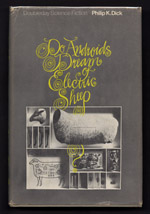 |
Philip K. Dick. Do Androids Dream of Electric Sheep? Garden City, N.Y.: Doubleday, 1968. [zoom] By the time Androids was published in 1968, Dick had published twenty-two other novels, only four of which first appeared in hardcover. The rest were released as paperbacks, most of them for Ace Books, then the largest publisher of science fiction. Doubleday’s hardcover release of Androids demonstrates the increasing respect Dick’s work received throughout the 1960s. |
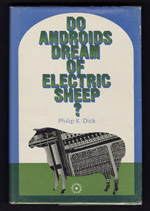 |
Philip K. Dick. Do Androids Dream of Electric Sheep? London: Rapp and Whiting, 1969. [zoom] A British edition was published the following year. |
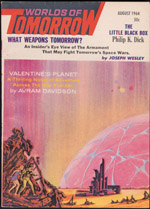 |
Philip K. Dick. “The Little Black Box.” Illustrations by George Schelling. In Worlds of Tomorrow, August 1964. New York: Galaxy Publishing Corp. [zoom] | Additional images:   
Many of Dick’s novels draw on material published earlier in his short stories. In the case of Androids, there is one major short story source: “The Little Black Box,” published in 1964, which deals with the rise of the religion of Mercerism. The mysterious savior Wilbur Mercer and the “empathy boxes” used by his followers became a major plot element in Androids, providing the vehicle for much of the novel’s explorations of the concept of empathy. |
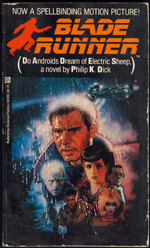 |
Philip K. Dick. Blade Runner (Do Androids Dream of Electric Sheep). New York: Ballantine Books/Del Rey, 1982. [zoom] | Additional images: 
The producers behind Blade Runner, concerned that the differences between the novel and the film would confuse potential readers, asked Dick to write a novelization of the film’s screenplay. Dick, fearing the de facto suppression of his original novel, declined. (He instead directed his energies to what would become his final novel, The Transmigration of Timothy Archer). The movie tie-in paperback represents a compromise: it gives prominence to the film’s title, relegating the original title to small type and parentheses, and includes a “publisher’s note” advising readers in advance that “though the novel’s characters and backgrounds differ in some respects from those of the film, readers who enjoy the latter will discover an added dimension on encountering the original work.” The text of the novel was also altered to change the date of the setting from 1992 to 2021, closer to the film’s stated date. The tie-in edition is shown here in two issues: one with the movie poster art by John Alvin, the other with an unused poster illustration by Drew Struzan. |
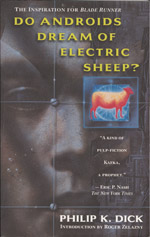 |
Philip K. Dick. Do Androids Dream of Electric Sheep? New York: Ballantine Books/Del Rey, 1996. [zoom] The 1996 trade paperback edition restores the novel’s original title to prominence, reflecting Dick’s growing reputation during the fourteen years since Blade Runner’s release. However, it maintains the altered date of the Blade Runner tie-in edition. |
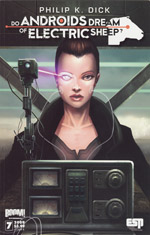 |
Philip K Dick and Tony Parker. Do Androids Dream of Electric Sheep? Los Angeles, Calif.: Boom! Studios, 2009. [zoom] In 2009, comics publisher Boom! Studios announced plans for an unprecedented project: a comics adaptation of Dick’s novel incorporating every word of the original work’s text. The artwork, by Tony Parker, owes a clear debt to Blade Runner’s cyberpunk aesthetic. |
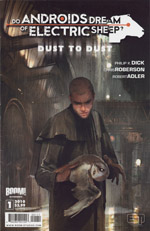 |
Chris Roberson and Robert Adler. Do Androids Dream of Electric Sheep?: Dust to Dust. Los Angeles, Calif.: Boom! Studios, 2010. [zoom] The series’ success has led to Dust to Dust, a prequel series authorized by Dick’s estate that explores the history and background of the novel’s world, including the gradual death of the world’s animals and the rise of Mercerism. |